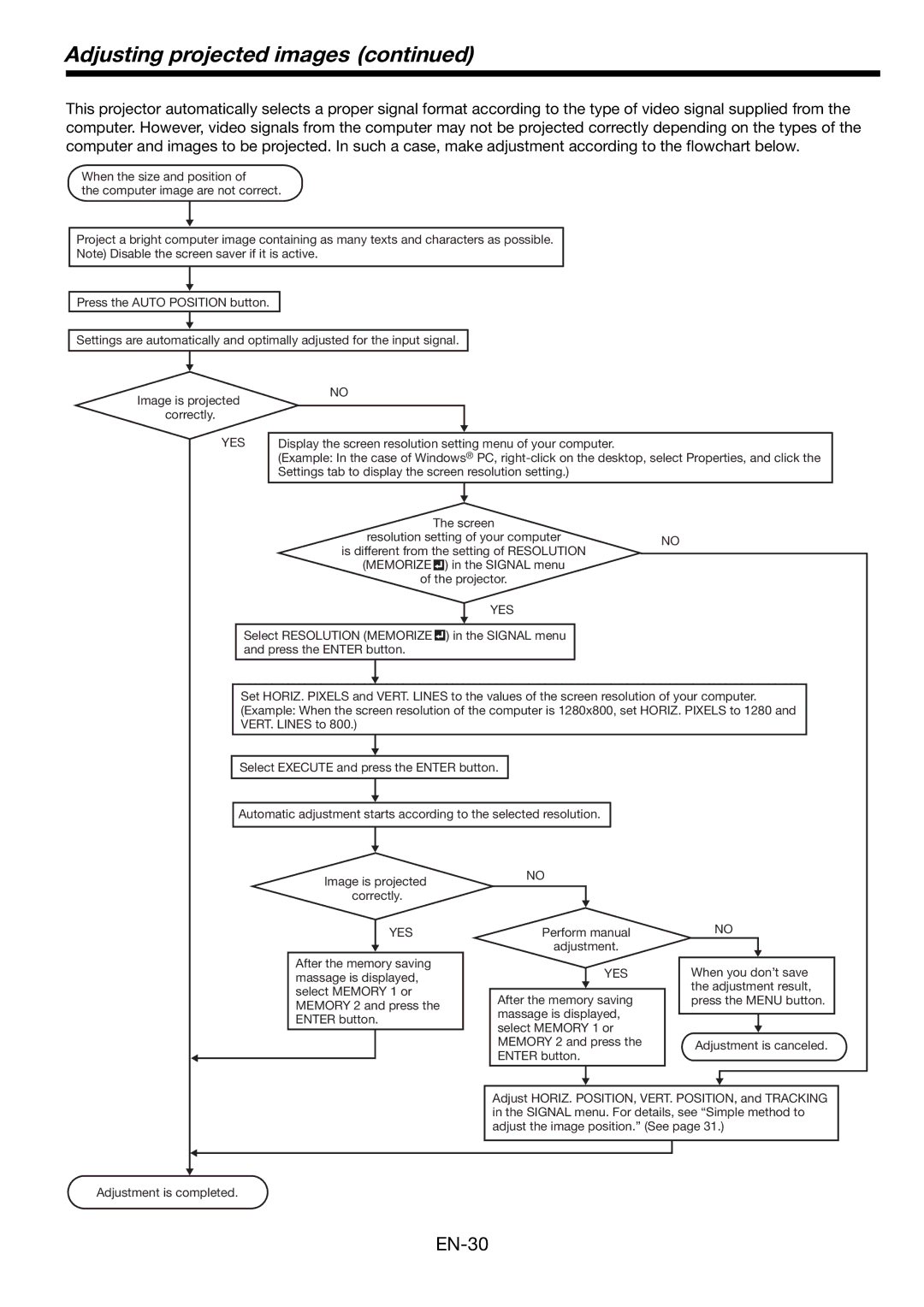
Adjusting projected images (continued)
This projector automatically selects a proper signal format according to the type of video signal supplied from the computer. However, video signals from the computer may not be projected correctly depending on the types of the computer and images to be projected. In such a case, make adjustment according to the flowchart below.
When the size and position of
the computer image are not correct.
Project a bright computer image containing as many texts and characters as possible.
Note) Disable the screen saver if it is active.
Press the AUTO POSITION button.
Settings are automatically and optimally adjusted for the input signal.
Image is projected correctly.
YES
NO
Display the screen resolution setting menu of your computer.
(Example: In the case of Windows® PC,
The screen
resolution setting of your computerNO is different from the setting of RESOLUTION
(MEMORIZE ![]()
![]() ) in the SIGNAL menu
) in the SIGNAL menu
of the projector.
YES
Select RESOLUTION (MEMORIZE ![]()
![]() ) in the SIGNAL menu and press the ENTER button.
) in the SIGNAL menu and press the ENTER button.
Set HORIZ. PIXELS and VERT. LINES to the values of the screen resolution of your computer. (Example: When the screen resolution of the computer is 1280x800, set HORIZ. PIXELS to 1280 and VERT. LINES to 800.)
Select EXECUTE and press the ENTER button.
Automatic adjustment starts according to the selected resolution.
Image is projected correctly.
YES
After the memory saving massage is displayed, select MEMORY 1 or MEMORY 2 and press the ENTER button.
NO
Perform manual
adjustment.
YES
After the memory saving massage is displayed, select MEMORY 1 or MEMORY 2 and press the ENTER button.
NO
When you don’t save the adjustment result, press the MENU button.
Adjustment is canceled.
Adjust HORIZ. POSITION, VERT. POSITION, and TRACKING in the SIGNAL menu. For details, see “Simple method to adjust the image position.” (See page 31.)
Adjustment is completed.
